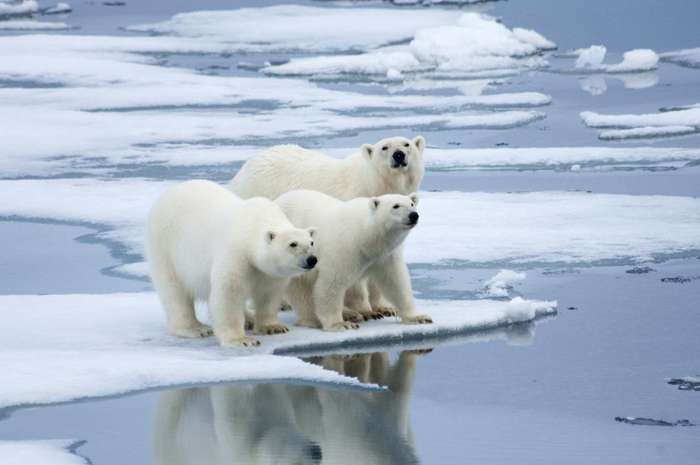Polar Bears definitely know how to pose for the camera. Any picture of them is absolutely adorable. They are cool in front of the camera, and live in the coolest places on the planet. But the looks can be deceiving. We think of polar bears as cute and cuddly animals.
But they are predators, and they top the food chain in the Arctic. Living in areas where the temperature can range between -34 Celsius degrees in the winter and up to just 0 in the summer, polar bears have hard time finding food. They live in Siberia, where in the northeastern part, the temperature can go as low as -60 Celsius in the winter.
With an extremely dense fur coat, polar bears can survive those temperatures. What many people do not know about the polar bears is that these animals are predators. In fact, they are the world’s largest land predator.
They spend most of the time on the pack ice or in the water. This is where they hunt their favorite food, seals.
Massive Carnivores
A single polar bear can consume up to 100 pounds/45kg of meat at one feeding. A single polar bear needs as much as one seal per week, or between 50 and 75 seals per year to survive. These bears eat as much as they can during the winter to accumulate fat. Then, during the summer, when the ice melts and it is harder to catch seals, they live off the fat in their body.
Males can reach weight between 850 and 900lbs (380-400kg). The record is a polar bear killed in 1960, weighing 2,210lbs, or 995kg. That bear was 12 feet long.
Males are bigger than females. A single male polar bear can weight two to three times more than a female bear. Male polar bears are also known as boars, while females are called sows. We know the babies as cubs. Male and female bears get together only during mating season. When the female is pregnant, she goes into a modified hibernation state, which is not a deep hibernation. Their body temperature remains high.
How they search for food?
Polar bears spend a lot of time moving and searching for their food. They can move great distance in search of seals. The range of polar bears can vary from 20,000 to as many as 135,000 square miles. They hunt through the winter ice that forms over the ocean. This is where seals spend most of their time, and when the ice melts, bears cannot hunt for the seals as easily.
As mentioned previously, polar bears eat more during the winter. At this point, half of their body mass is pure fat. The thick layer of fat keeps them warm and fed during the summer.
When the summer hits, polar bears roam as far south as Hudson Bay. There, they hang out until the sea ice forms again.
We also have to note that polar bears are great swimmers. They can swim for several hours straight. They can move as much as 100km in a single stretch. And they can hold their breath for two minutes. They can also close their nostrils without having to pinch their noses.
Fun Facts
– Polar bears are classified as marine mammals because they spend most of their lives on the sea ice, and they are the only bear species to be considered marine mammals
– Polar bears are not white, they are black. But because their bear fur is translucent, it appears white by reflecting visible light
– They spend most of their life hunting for food, but only less than 2% of their hunts are successful. While they prey on ringed seals and bearded seals, they are also scavengers, eating small mammals, birds, eggs, and vegetation
– Polar bears can smell the prey up to one kilometer away. Using their strong sense of smell, they find seal breathing holes in the ice, and once they find the hole, they wait patiently until the seal comes up for air



